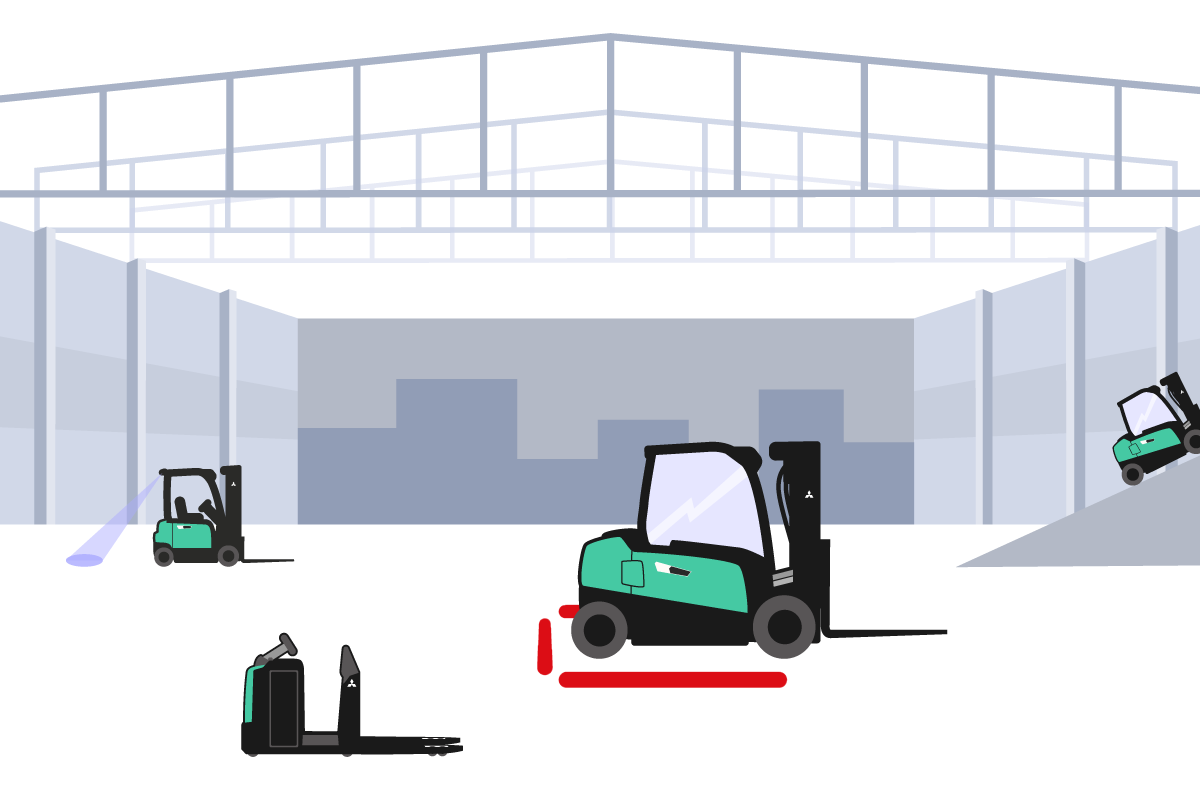According to the UK Health and Safety Executive (HSE), forklifts are involved in nearly 1,300 serious accidents each year in the UK alone. Despite this, at a recent safety conference, a speaker who had previously worked on the shop floor said they felt more anxious walking around a supermarket car park than working in close proximity to forklifts.
It’s the human condition. Familiarity may not breed actual contempt, but it can encourage complacency. Despite the constant threat posed by fast-moving machinery it’s almost impossible to maintain a heightened state of awareness, especially when nothing has ever gone wrong... yet. The problem is that when it does, the results are almost always devastating, and the damage lasts a lifetime.
Indeed, every year, many hundreds of people are injured in the UK — some of them fatally — in incidents involving forklift trucks. Two thirds of those are pedestrians performing tasks unrelated to the forklift, including supervisors, and delivery drivers overseeing loading and unloading of their vehicles.
But it need not — and should not — be so. Especially when there are some straightforward solutions that will transform safety.
- Carry out a risk assessment
The first step is to conduct a risk assessment of your site. This will help you to identify any dangerous areas that need to be addressed. You can find a basic risk assessment template here: https://www.hse.gov.uk/simple-health-safety/risk/risk-assessment-template-and-examples.htm
When it comes to reviewing your own site, you’ll find Mitsubishi Forklift Truck specialists valuable for providing free expert guidance.
- Take pedestrians out of the equation
Carry out an audit and identify which employees genuinely need to be in an area where forklifts operate. Equip those who must be there with distinctively coloured hi-vis vests and ban everyone else (you’ll be surprised how many you can exclude!).
- Create designated walkways
Where trucks and colleagues on foot must share the same workspaces, it’s vital to keep them apart as much as possible. Painted lines and hashed areas are an option, but raised pavements and physical barriers made of steel or plastic are far more effective. These should run alongside walkways and at every crossing — forcing pedestrians to stop, preventing them walking directly into the path of an oncoming truck. One-way systems are effective, and in areas where space is particularly tight you could consider overhead walkways (although disability access must be considered). Wall-mounted mirrors can also be installed at blind corners.
- Choose trucks with built-in safety features
Choosing a forklift with built-in safety features (or retrofitting where possible) can reduce risk of accidents significantly. There are lots of innovative products available, such as anti-collision systems, proximity sensors, blue lights that alert pedestrians, and safety zone beams that project an effective ‘no-go’ zone around a forklift. You may also wish to attach cameras to capture and review unsafe operations.
Where necessary, speed limits should be introduced (some forklifts have speed limiters as standard). One-way systems are also effective to avoid the risk of collisions. Ensure all indoor areas are well lit to aid visibility and add mirrors to blind corners.
- Reduce speed to reduce accidents
Set strict speed limits on your forklifts. Consider electronic speed zoning to automatically slow trucks down in high-risk areas.
- Monitor what’s happening when you’re not there
Front and rear cameras and GPRS impact detection systems can provide you with timed and dated footage, allowing you to review incidents and identify individuals who need additional training or hazardous areas that need improvement.
- Communicate with staff
Make everyone aware of the risks and consequences of working around forklifts by providing sufficient training and hosting regular health and safety meetings.
If operators and pedestrians have a clear — and shared — understanding of safe working procedures, they will be able to confidently perform their daily duties in line with best practice. Courses are available that bring both operators and pedestrian colleagues together, so they understand each other’s perspective and responsibilities.
If you manage forklift operations, walk the walk by regularly spending time on the shop floor and engaging with staff. Your presence in monitoring day-to-day operations will help prevent complacency from creeping in and bad practice becoming the norm.
- Seek out assistance
Consider calling in someone who’s seen it all before to help you review your application and premises. Mitsubishi Forklift Trucks specialists are highly experienced in the assessment and enhancement of materials handling operations and can offer in-depth guidance and advice on working safely on site.
Here is an example of how we helped leading cereal manufacturer Kellogg’s https://www.mitsubishi-forklift.co.uk/kelloggs-case-study-uk
By implementing these measures, you can create a safer work environment that significantly reduces the risk of accidents involving forklifts. Protecting both your operators and pedestrians not only enhances safety but also boosts overall productivity and morale. Don’t wait for an accident to highlight the need for change — take proactive steps now to keep everyone safe and ensure smooth operations.
Need help with your site safety plan? Contact our experts at info@mitsubishi-forklift.co.uk



